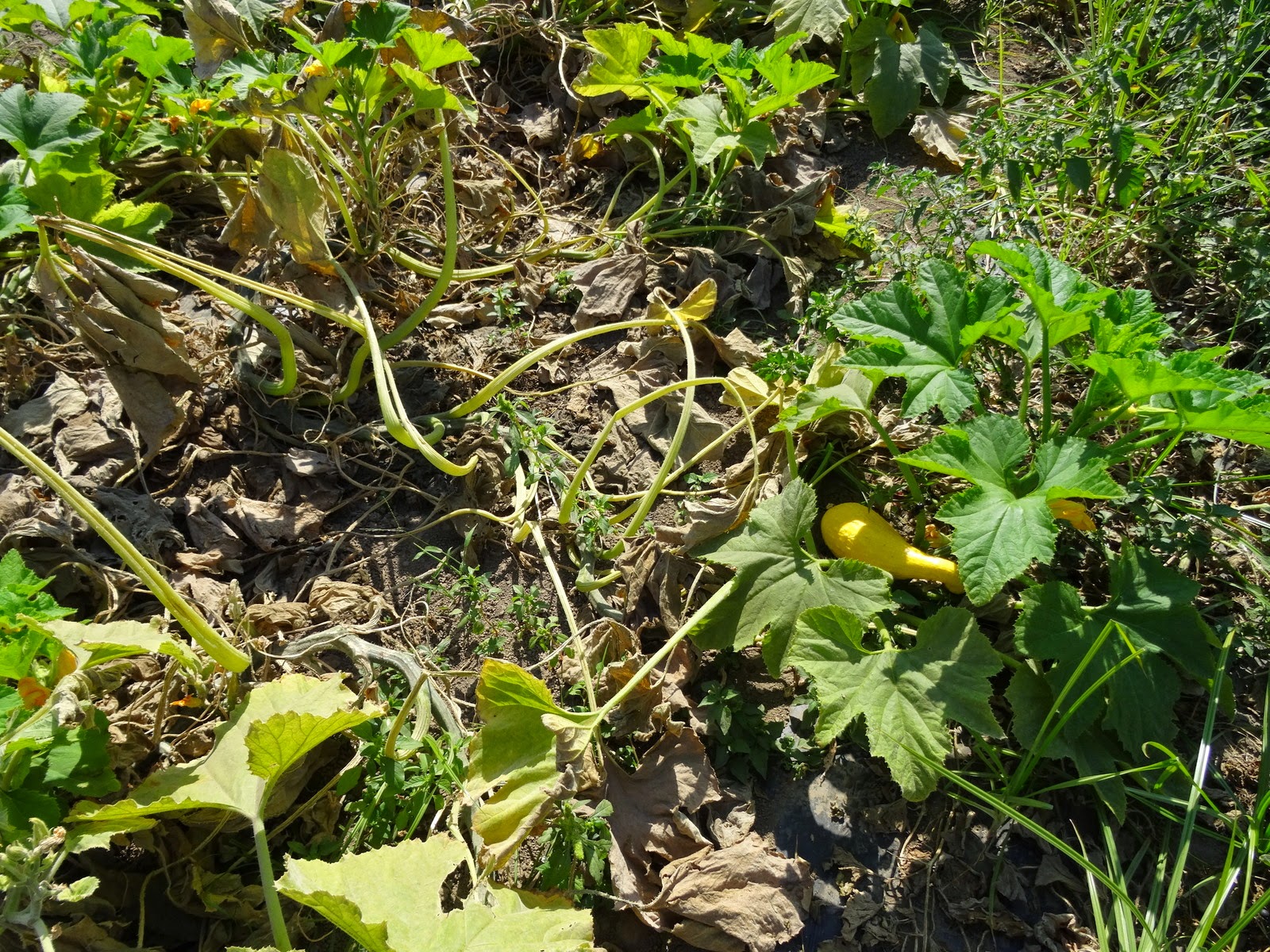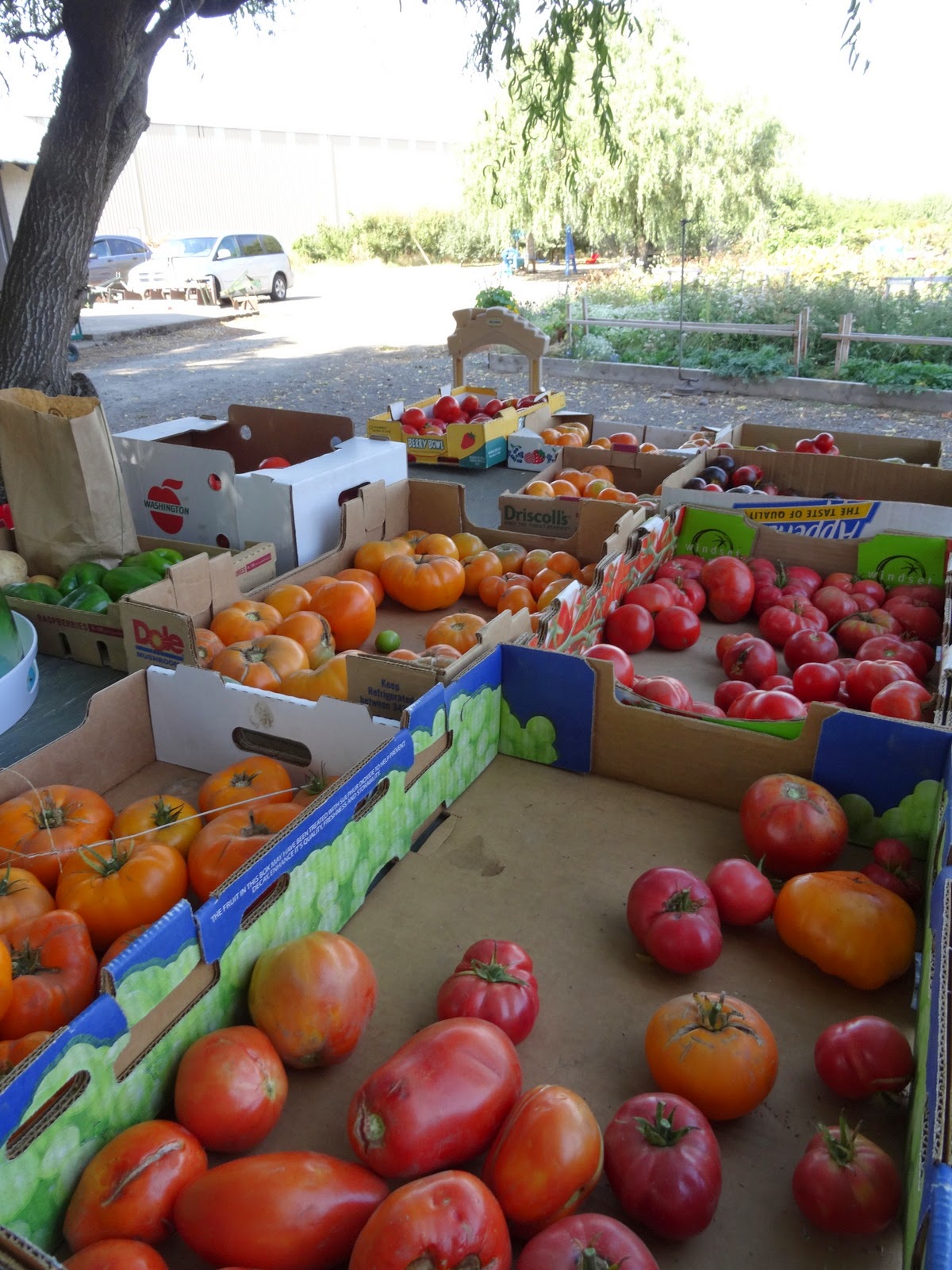 |
| Curly willow harvested last winter awaits bundling for this weeks harvest boxes. After the leaves fell last year, Lisa and Anna trimmed the tree by the orchard with bundles in mind. |
 |
| Samples of the possibilities with gourds and curly willow. |
 |
| Bundles are separate and tied to aid in ease of selection for our box holders. |
 |
| A wide variety of little pumpkins and gourds. |
 |
| Another view which includes the gazebo. |
 |
| Box holders will be selecting their collection of goodies and placing them in the bag underneath. Then selecting their bundle of curly willow from the holding buckets to the right just out of the photo. Samples in the middle are for ideas. |
 |
| Mini bell peppers are changing color. Most peppers start out green and then change color. These end up a deep orange when at their sweetest. |
 |
| Lunch today, chicken fajitas with onions and peppers. Yum! |
 |
| Refried beans Anna made from our dry black beans at The Farm. Rich flavor. |
 |
| Florencio digging carrots. He will then take them in and wash the mud off. This part of the row contains the orange carrots. |
 |
| Yellow crookneck squash is producing out toward the ends of the bushes. The first part of the stems that have grown are no longer productive, leaves have dried up near the base of the plant. It almost looks like a new plant is growing about 3 feet from the original plant. |
 |
| Zucchini started producing to the right of this photo along the stem. Now they are producing out toward the newer growth at the left side of the photo. |
 |
| Tomato choices for today. Bags have been filled with many varieties today. Large orange ones to the left are Kellogg Breakfast tomatoes. The bottom box contains Pear Goliath and Red Brandywine varieties. |
 |
| Tomato picking hand with the pepper patch in the background. We do love planting flowers IN the vegetable garden. |
 |
| The day's cherry tomatoes are bagged. We try to fill them as full as possible without squishing the ones on the bottom of each bag. |
 |
| A cart full of squash with one bottle gourd. Front to back: two varieties of yellow crookneck, tan butternut, "Carnival" acorn squash, white patty pan, green speckled bottle gourd, dark green acorn and finally zucchini. |
 |
| Asian pears. Our neighboring farmer has worked his fields recently covering our produce with a fine dust. A good rain will wash it away. |
 |
| We have enjoyed all the colors of mini bell peppers this year. |
 |
| Red noodle beans were a pleasant addition this year. We love fun vegetables. |
 |
| Colorful vegetables are pretty AND good for us. |
 |
| Sweet corn usually has two ears per stalk. |
 |
| The "silk" of this variety is dried up and brown. An indicator of how ripe the corn is. Dried out and brown usually means it is ripe. The top most ear is the first to ripen. |
 |
| This variety is less mature, notice the color of the silk. Also the ear is still skinny looking and narrow at the top. An experienced corn picker can pick in the dark by feel. Lisa and my Dad used to pick up to 100 dozen ears of corn before work in "the old days" when we operated our roadside stand. He picked into a wheel barrow with wooden boxes that held 5 dozen ears. He was a corn picking machine! |
 |
| The side view of the corn patch. Florencio planted three varieties of corn for this patch. The "days to harvest" for each variety is different. "dth" indicates how many days after you plant your crop until you should be able to harvest it. The earliest variety is a "58 dth" variety and is planted closest to the house and the latest, "105 dth" furthest away. This allows for a longer harvest time instead of this entire patch being ready all at once. |
 |
| Raspberries are a biennial plant. The first year the canes grow and may produce fruit in the fall on the tips of the canes, like these green canes here. Next summer these same green canes will produce their biggest crop off their two year life on their lateral shoots (side shoots) and then will die off. Hence the brown canes in the middle of the row. |
 |
| The brown canes on the inside of these raspberry rows will be cut down to the ground and hauled away. The green first year canes will be tied up and ready for lateral shoots to grow and produce next summer. And the process will repeat. |
 |
| Blackberries are also biennials. The brown canes that are up on the wires produced this year and have now completed their life cycle and will be cut down and hauled away. The green canes that Florencio has trained to grown under the row and not in the paths, will be trained up on the wires a bit later this fall or winter. And the cycle will repeat. |
 |
| A late planting of broccoli grows in between the newest sunflower crop and the corn. Broccoli isn't a fan of hot weather so these tall plants provide some shade to help cool them. |
 |
| Blackberries on the left are all up on their wires for next year. The ones on the right have had their old canes trimmed and hauled away. Florencio has been busy! |
 |
| This row of blackberries on the right has been trimmed, the new canes are up. The old brown canes lying in the wide path will be hauled away to the burn pile. |
 |
| These pole beans are the red noodle beans. Their leaves are starting to wane indicated by the yellow coloring. Our new crop of lettuce in the foreground. |
 |
| A bouquet of pink asters and zinnias along with white and purple dahlias. A box of gourds in a variety of colors, shapes, sizes and "wartiness". |
 |
| The last crop of sunflowers are beautiful. |
 |
| Chris, in the background, missed her summer farm day "fix" so came out after her school day to help out in the flower shed. Today is the gourd, curly willow and sunflower day we have been planning for. Chris is prepping newspaper for soaking in water and wrapping the sunflower bouquets and Lisa on the right is bagging gourds for someone while they get their box of produce. |
 |
| Today's boxes are very full. Not everything fits in. A sugar pumpkin for cooking or carving is included. |
 |
| The Black eyed Susans are beautiful. After the yellow ray flowers have dried up, the brown seed head matured in the center is a nice snack for the little birds, like this one balancing in the middle. |
No comments:
Post a Comment